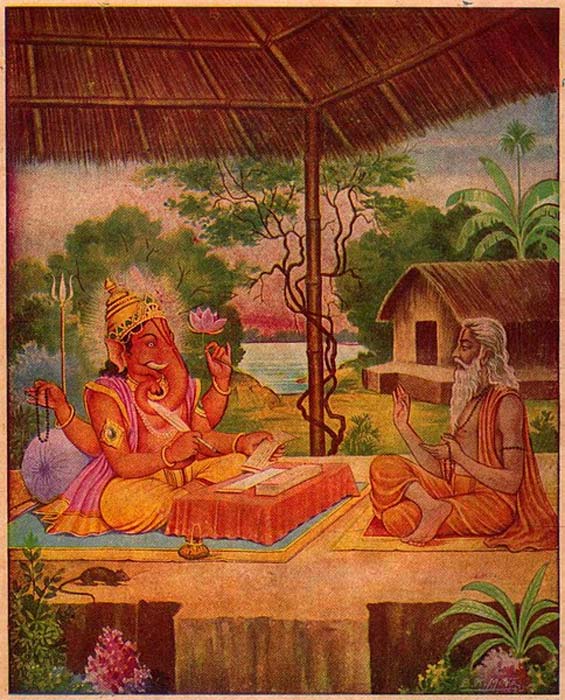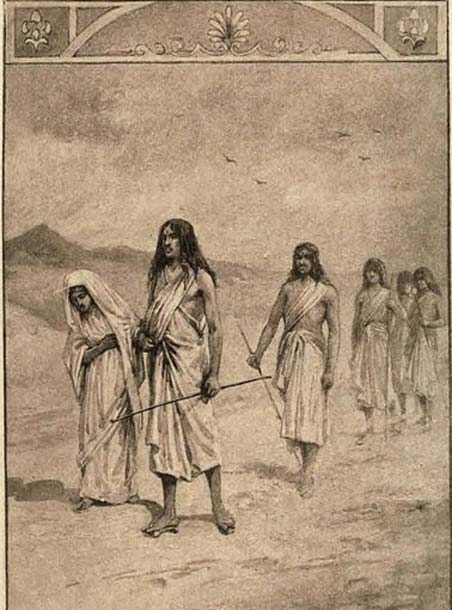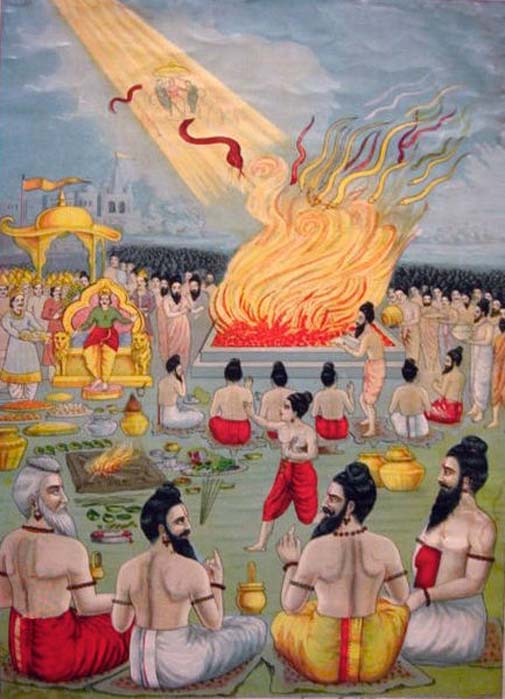One of the two major Sanskrit epic poetry of ancient India, along with the Ramayana, is the Mahabharata, which can be translated from Sanskrit as “The Great Epic of the Bharata Dynasty.” In a nutshell, the Mahabharata is about the Kurukshetra War, sometimes referred to as the Mahabharata War, which saw two cousin groups, the Pandavas and the Kauravas, fighting for control of Hastinapura. This epic poem is regarded as having enormous value and is frequently referred to as one of the greatest literary creations of all time.
Origins of the Mahabharata in Antiquity
The Mahabharata is widely believed to have evolved into its current shape about the 4th century BC. Additionally, it has been suggested that this epic was written earlier, maybe in the middle of the first millennium BC. The epic may have existed at that time in the shape of well-known stories about gods, monarchs, and seers that were passed down orally by priests, ascetics, and itinerant minstrels.

In any case, the Mahabharata is the world’s longest epic poem because its current version has roughly 100,000 stanzas and 1.8 million total words. To put this into perspective, the Mahabharata is around ten times longer than the sum of Homer’s Odyssey and Iliad. Although it seems improbable that a single person penned the entire epic, according to tradition, the lines of the Mahabharata were transcribed by Ganesha after being delivered by the sage Vyasa.
Also Read – Draupadi: Inventor Of Pani Puri
First Chapters of the Indian Epic
The blindness of Dhritarashtra, the elder son of Vichitravirya (the king of Hastinapura) and the father of the Kauravas, marks the beginning of the Mahabharata. When Vichitravirya passed away, Pandu (the father of the Pandavas), Dhritarashtra’s younger brother, took over as the new monarch of Hastinapura because Dhritarashtra could not succeed to his father’s throne due to his blindness. Pandu was unable to have children because of the sage Kindama’s curse on him, which made it impossible for him to engage in sexual activity without jeopardising his own life. Kindama’s curse causes the king to flee to the forest, where his blind brother takes over as ruler.

Kunti, Pandu’s first wife, prays to the gods in order to be impregnated by them in order to get pregnant and give birth to offspring for Pandu. Her prayers are heard, and she gives birth to three sons: Arjuna, Bhima, and Yudhishtira, who are all fathered by Vayu (fathered by Indra). Through this technique, Madri, Pandu’s second wife, also gave birth to children. The identical twins Nakula and Sahadeva were her two sons (fathered by the Ashvins). On the other hand, Dhritarashtra and his wife Gandhari have one daughter and one hundred sons, the Kauravas.
Madri commits Sati out of regret after having sex with Pandu, leaving Kunti and the five young boys to fend for themselves. Pandu dies as a result of the curse. The boys were given to a teacher, Kripa, along with their 100 relatives after the Pandavas and their mother returned to Hastinapura. They would later receive instruction from Drona. The Pandavas and Kauravas quickly began to have a savage rivalry, which led to the banishment of the former not once, but twice.
Also Read – Shurpanakha – Ravana’s Instigator in the Abduction of Sita
War:
The Pandavas prepared for war with their relatives after their second banishment. The area that Dhritarashtra gave the Pandavas permission to cultivate, Indraprastha, but which they ultimately lost to the Kauravas in a dice game, was demanded back from the Kauravas by emissaries sent to them. Even though Krishna, a Vishnu avatar and the Pandavas’ maternal cousin, personally undertook the task to resolve the conflict peacefully, it was unsuccessful.
This led to the start of the Kurukshetra War. Even the historicity of this conflict is a hotly contested issue among scholars who disagree on when it actually occurred. The Kurukshetra War, according to the Mahabharata, lasted 18 days and resulted in the deaths of the majority of the epic’s characters. Here, just before the fighting starts, is where the Bhagavat Gita, arguably the most well-known episode in the epic, takes place.
When Arjuna sees his loved ones on the enemy side, he begins to lose focus and decides to leave the battlefield. When Arjuna asks Krishna, who was acting as his charioteer, to take him back, the Vishnu avatar launches into a philosophical monologue about the transience of life, the value of doing one’s duty, and remaining on the virtuous path.
Life Off the Battlefield:
The Pandavas win the conflict, despite the fact that both sides suffered nearly entire losses. Only eight survivors are mentioned on the side of the Pandavas, and only four survivors are named on the side of the Kauravas. The epic does not, however, stop with the war.

The Mahabharata continues to describe how the Pandavas came to dominate Hastinapura and Indraprastha. Vaishampayan, a student of Vyasa, narrated the complete epic to Janmejaya, a great-grandson of Arjuna, during a snake sacrifice.
Also Read – 5 Pandava-Built Temples in Kerala



